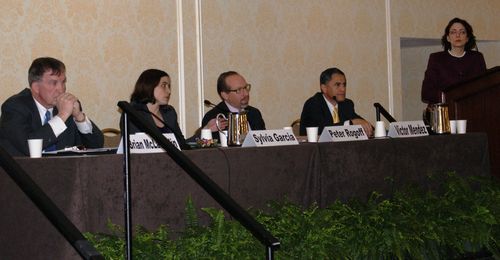We've had a busy two weeks since the Transportation Research Board conference, and one thing that’s slipped through the cracks is passing on a few tidbits that came at the end of the TRB panel of U.S. DOT officials on January 16.

First, in response to my question about whether the dip in vehicle-miles-traveled had affected how DOT performs travel forecasting and, therefore, transportation planning: "Certainly, we have been observing that trend," said Polly Trottenberg, DOT's under secretary for policy. "One of the reasons that’s been posited is, there’s a generational change going on; younger generations are driving less, for a variety of reasons."
Those reasons include graduated drivers' licenses and new technologies like Uber and bike-share, she said. "It fits in to what we think the American transportation system needs to be, which is multimodal."
So does it affect their planning? Trottenberg says yes:
We don’t know yet what the long term VMT trend will be, but we know that since 2005, per capita VMT is essentially flat and declining. And, yeah, that certainly figures into our planning.
That’s different in different parts of the country and may or may not figure into a particular local plan, but certainly it’s something we look at as we’re looking at, departmentally, what we want to do.
The flip side of the dip in driving is an uptick in transit ridership. It's hard to believe that in this context, some people still think transit isn't a high priority and shouldn't receive dedicated federal funding. At TRB, FTA Administrator Peter Rogoff said he thinks that the Republican effort to whack transit last year was a last gasp of sorts:
[One] thing I find exciting: the House debate this past year notwithstanding, I think we are really moving past these sort of knuckle-dragging debates in the past about highways versus transit. We recognize that with 100 million more citizens coming to the United States by 2050, we need more of both.
We’re seeing transit leaders in places like Gov. Rick Snyder of Michigan, and it’s no longer a partisan issue. The vision for transit and, for that matter, rail investment, is coming from people of all political stripes. We’re breaking down the political side of all this preferring one modal approach to another. We just need more of all of it and people are coming around.





